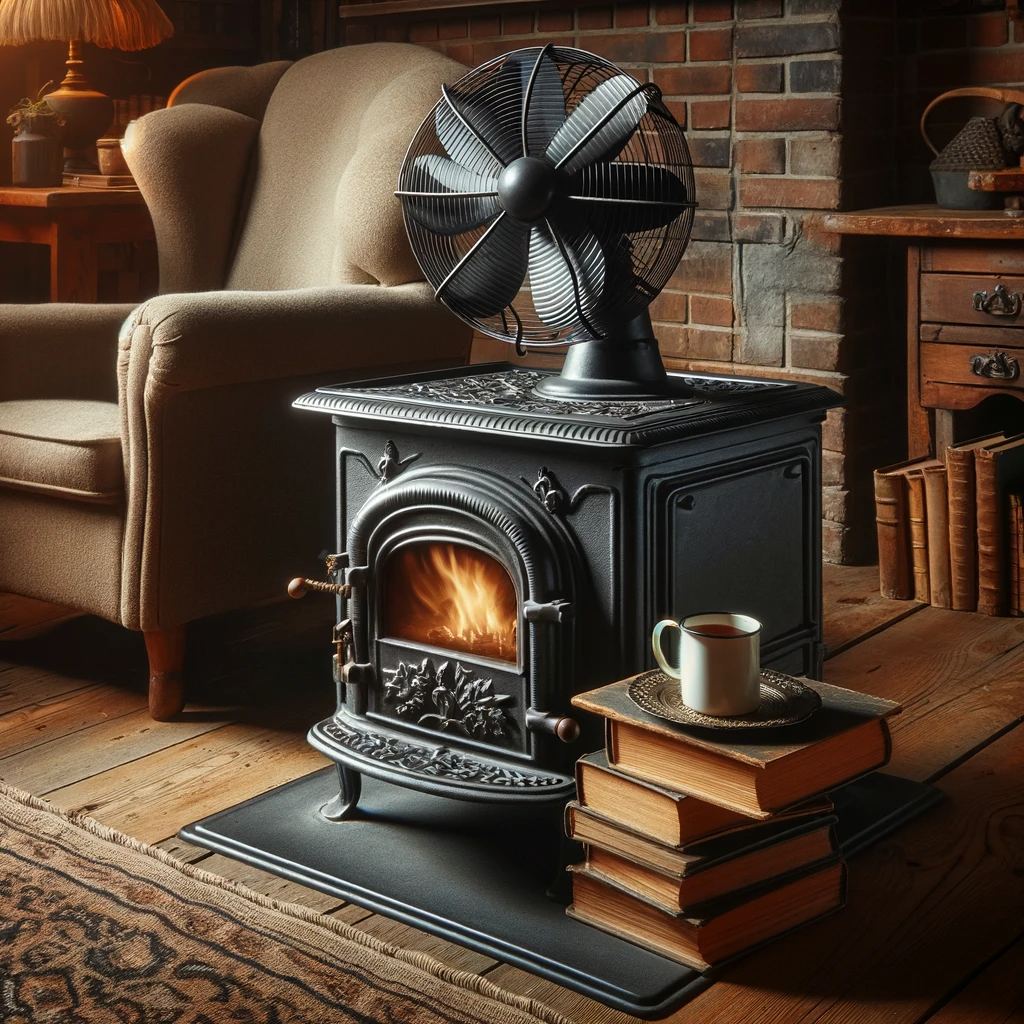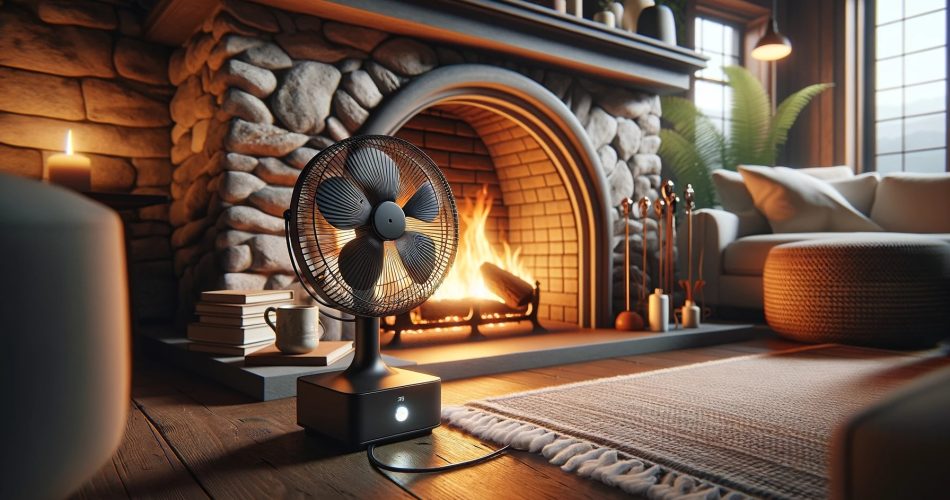Wood stove fans are a relatively modern solution to an age-old challenge: how to distribute the fire’s warmth efficiently. Historically, the heat from a hearth was often poorly circulated, leading to hot spots near the fire and colder areas further away. It wasn’t until the advent of electricity and a deeper understanding of thermodynamics that the modern wood stove fan could be developed. These fans work very well with small wood stoves as well.
How Wood Stove Fans Work
Thermoelectric Fans: These devices are a marvel of engineering, using the Peltier-Seebeck effect to generate an electric current. Essentially, when there is a temperature difference between the fan’s base (hot) and the top (cooler), electricity is produced, which powers the fan’s motor. This type of fan does not require any external power source and is self-regulating; as the stove gets hotter, the fan spins faster.
Electric Blower Fans: Common in gas and electric Wood stoves, these fans use a motor powered by household electricity to force air over heated coils or a heat exchanger and back out into the room. They often come with adjustable speed settings to control the airflow and are controlled by the Wood stove’s controls or a separate switch.
Why You Need A Wood Stove Fan

The use of wood stove fans is not just about luxuriating in the warmth of a fire; it’s about maximizing the efficiency and effectiveness of a home heating system. Here’s why people might need a Wood stove fan:
Enhanced Heat Distribution
The primary reason to use a wood stove fan is to push the warm air generated by the wood stove or stove out into the room. The heat rises directly upwards without a fan, leaving much of the room cold. A fan helps to circulate this warm air throughout the space, leading to a more evenly heated environment.
Increased Energy Efficiency
By improving the distribution of heat, wood stove fans can actually reduce the amount of fuel you need to burn to keep a room at a comfortable temperature. This increased efficiency can lead to lower heating costs and a reduced environmental impact by consuming less fuel.
Improved Comfort
A Wood stove fan can significantly improve the comfort of your home by eliminating the cold spots that can occur in rooms with a Wood stove. With better circulation, the heat from the fire can be enjoyed throughout the entire room, rather than just near the Wood stove.
Preservation of Air Quality
Some Wood stove fans are designed to help minimize the smoke and pollutants from a fire. They can help to draw smoke away from the living area and towards the chimney, improving the air quality inside the home.
Historical and Aesthetic Value
For those in historic homes or with an appreciation for traditional aesthetics, a heat-powered fan can be particularly appealing because it does not require modern electrical wiring and can maintain the period look of the wood stove while still increasing its efficiency.
Quick Heat Recovery
When you reload the fuel in your wood stove or wood stove, the room temperature can drop as the fire builds up again. A fan helps to recover the heat more quickly by immediately pushing the increasing warmth out into the room.
Silent Operation
Especially with non-electric, heat-powered fans, they can operate almost silently, adding comfort without the intrusion of noise. This is a considerable advantage for those who enjoy the quiet crackle of a fire without the whir of machinery.
Compatibility and Ease of Use
Most wood stove fans are very easy to install, and heat-powered models require no electrical connection or complex setup. This simplicity means that virtually anyone with a wood stove can benefit from a fan without needing professional installation.
In summary, a wood stove fan is an affordable, simple, and effective way to enhance the comfort, efficiency, and enjoyment of a wood stove or wood stove. Whether you’re looking to save money on heating, make your home cozier, or just enjoy the ambiance of a fire without the chill, a Wood stove fan is an investment that can deliver significant returns.
Some Interesting Historical Facts About Wood Stoves
The concept of moving air to manage heat can be traced back to ancient times. The Romans, for example, used a system called a ‘hypocaust‘ where they directed the heat from a fire through the floors and walls of the bathhouses. While not fans in the modern sense, these early methods of directing heat flow are the ancestors of today’s sophisticated systems.
In the 18th and 19th centuries, Benjamin Franklin and Count Rumford designed stoves to improve heat distribution efficiency. Their work laid the groundwork for modern heating technology.
Conclusion
Today, the wood stove fan stands as a testament to human ingenuity, a simple yet effective tool that improves the comfort of our homes and the efficiency of our heating. Whether through the silent spread of warmth from a thermoelectric fan or the gentle hum of an electric blower, these devices have become integral to the way we experience the hearth in the modern age.
Whether you’re an enthusiast of historical home design or a homeowner seeking to improve your living space’s warmth and efficiency, the Wood stove fan represents a confluence of history, science, and practicality. As we continue to seek out sustainable and efficient ways to heat our homes, the Wood stove fan is likely to evolve, but its purpose and effect remain a constant comfort.



[…] installing the heat-powered stove fan (Self-powered) that I hesitantly invested in, I immediately noticed the difference in circulation. […]